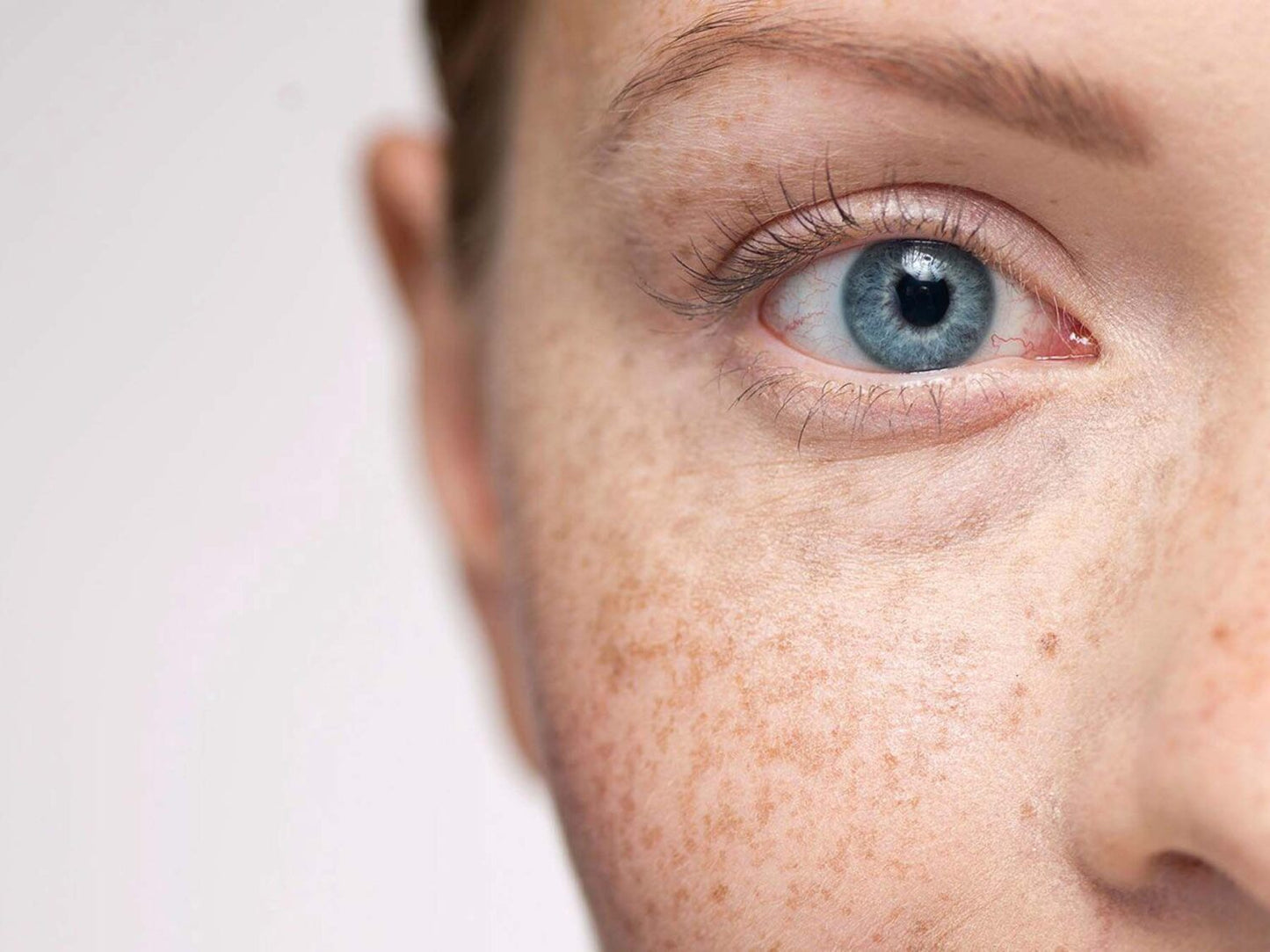
Melasma is a common skin condition that affects millions of people worldwide. Characterized by dark, discolored patches on the skin, it’s often associated with sun exposure, hormonal changes, and genetics. While several treatment options are available, ozonated oils have emerged as a natural alternative that may support the skin in both treatment and symptom management. Here’s a closer look at what melasma is, how it differs from similar skin conditions like poikiloderma, and how ozonated oils can potentially benefit those affected by it.
What is Melasma?
Melasma is a form of hyperpigmentation, where patches of skin become darker than the surrounding areas due to an excess of melanin. This condition usually appears on sun-exposed areas of the skin, particularly the face, and is more common in women, especially during pregnancy or when using hormonal birth control. Common areas affected by melasma include the forehead, cheeks, upper lip, and chin, but it can appear elsewhere on the body as well.
Symptoms of Melasma
- Brown or gray-brown patches on the skin, usually symmetrical.
- Patches often appear on the face but can also occur on the neck, forearms, or other areas exposed to the sun.
- No physical discomfort such as pain or itching, though the aesthetic impact can affect confidence and quality of life.

Differences Between Melasma and Poikiloderma
While melasma is strictly a pigmentation disorder involving excess melanin, poikiloderma is a chronic skin condition marked by several changes in the skin, including hyperpigmentation, hypopigmentation (light spots), telangiectasia (visible blood vessels), and atrophy (thinning of the skin).
Key Differences:
- Color and Pattern: Melasma presents as uniform brown or gray-brown patches, while poikiloderma shows a mixture of colors—red, brown, and light areas—often with visible blood vessels.
- Skin Texture: Melasma generally does not affect skin texture, while poikiloderma often involves a thinning or wrinkling of the skin.
- Location: Melasma typically affects the face, while poikiloderma commonly appears on the neck and chest.
Treatment and Management of Melasma
Managing melasma typically involves a combination of treatments aimed at reducing pigmentation and protecting the skin from triggers. Here are some common treatment approaches:
- Topical Treatments: Skin-lightening creams that contain ingredients such as hydroquinone, tretinoin, or corticosteroids are often prescribed to reduce pigmentation.
- Chemical Peels: Peels with glycolic acid, salicylic acid, or trichloroacetic acid may be used to exfoliate the skin and fade pigmentation.
- Laser Treatments: Lasers can target melanin in the skin, but results vary, and melasma can sometimes worsen if the treatment is too aggressive.
- Sun Protection: Using a broad-spectrum sunscreen daily is essential, as sun exposure is a major trigger for melasma.
- Natural Remedies: Some individuals explore natural options like azelaic acid, vitamin C serums, and ozonated oils to support skin healing and manage pigmentation.
The Role of Ozonated Oils in Melasma Management
Ozonated oils—such as ozonated coconut, hemp, olive, almond, and grape seed oils—have gained popularity in skincare due to their unique ability to provide antibacterial, anti-inflammatory, and skin-healing benefits. When applied to the skin, these oils can help in managing melasma by soothing inflammation, promoting cell renewal, and potentially helping to even out skin tone over time.
Benefits of Ozonated Oils for Melasma
- Anti-Inflammatory Properties: Ozonated oils have strong anti-inflammatory effects that can help reduce redness and irritation, which is important for melasma as inflammation can trigger further pigmentation.
- Antioxidant Effects: The ozone in these oils works as an antioxidant, which can help to neutralize free radicals caused by UV exposure. This protection may help prevent melasma patches from darkening further.
- Moisturization and Skin Barrier Repair: Melasma-prone skin can often benefit from hydration. Ozonated oils help to lock in moisture, repair the skin barrier, and create a protective layer that supports overall skin health.
- Promotes Cell Renewal: The oxygen-rich formula in ozonated oils can promote skin cell turnover, encouraging faster healing and potentially reducing pigmentation over time.
Recommended Uses of Ozonated Oils for Melasma
Ozonated oils can complement other treatments for melasma by providing moisture, protection, and skin-soothing effects. Here’s how to incorporate them into your routine:
- Daily Moisturizer: Apply ozonated oils as a moisturizer in the morning and evening after cleansing the skin. Ozonated coconut oil, for instance, is ideal for its light texture and hydrating properties.
- Spot Treatment: For areas with intense pigmentation, ozonated grape seed or olive oil can be applied to help even out tone over time due to their nourishing and antioxidant-rich properties.
- Combine with Sunscreen: Apply ozonated oil before your sunscreen to create an additional layer of protection and help keep skin moisturized. Remember, sunscreen remains essential in preventing melasma from worsening.
Choosing the Right Ozonated Oil
- Ozonated Coconut Oil: Lightweight and hydrating, perfect for daily application and sensitive skin.
- Ozonated Hemp Oil: Rich in omega-3 and omega-6 fatty acids, it provides deep nourishment and anti-inflammatory benefits, ideal for irritated skin.
- Ozonated Olive Oil: Known for its antioxidant properties, it’s suitable for reducing pigmentation and protecting the skin barrier.
- Ozonated Almond Oil: Gentle and easily absorbed, this oil can help soften skin and reduce dryness, making it ideal for daily use.
- Ozonated Grape Seed Oil: High in linoleic acid, it can help balance skin’s moisture levels, and its antioxidant content supports even skin tone.

Conclusion
Melasma can be a persistent skin concern, but with proper management and care, it’s possible to achieve a more even complexion. While traditional treatments can target pigmentation, ozonated oils offer a natural, supportive option that can enhance hydration, protect against oxidative stress, and soothe inflammation—all essential components in managing melasma.
By incorporating ozonated oils into a skincare routine, individuals with melasma may find a gentle, effective way to support their skin’s health and appearance. Remember to consult with a dermatologist before beginning any new treatment, and to always prioritize sun protection to maintain lasting results.






